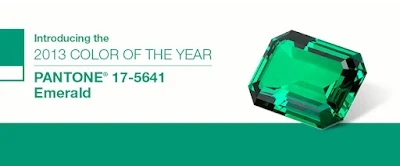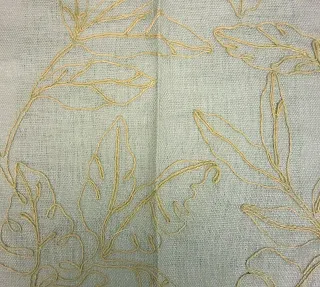There are so many projects that can be done with fabric remnants and the outcome is awesome. Here are a several DIY ideas you can do at home.
Use scraps of coordinating fabrics to create a modern patchwork-effect headboard. To make the headboard, cut 8-inch squares from stiff florist's foam and 1/4-inch plywood. Cut 8-inch squares from
quilt batting
and place over foam squares. Glue all layers with Styroglue. Cut fabric
into squares large enough to wrap the foam squares with at least a 1/2
-inch overlap on the back. Staple fabric to the back with a staple gun.
Cut a piece of 1/4-inch plywood a few inches wider than your mattress on
both sides. Line up the squares facedown in your desired pattern and
attach them to each other with heavy-duty tape. Top them with the
plywood, and drill wood screws at 8-inch intervals to secure all the
layers. Attach ring hooks to the back of the plywood to hang the
headboard on the wall.
Add style to a plain wooden chair with
fabric. Remove the seat and back from the chair. Trace the seat on 1/2-inch foam, cut the foam, then attach it to the seat with spray adhesive.
Cut fabric 3 inches wider than the seat perimeter. Wrap fabric over the
seat, smoothing as you go and securing with heavy-duty carpet tape on
the bottom. Trace the chair back on paper and add 1 inch all around.
Using the pattern, cut two pieces of fabric. Lightly spray the front of
the chair back with spray adhesive and press fabric onto the front,
wrapping the allowance to the back. Fold under 1-inch allowance on the
second piece of fabric, wrong sides together, and press. Use fusible
webbing to adhere the fabric to the back of the chair, overlapping the
wrapped allowance. Reattach the seat and back.

Add pretty curtains to your windows or hide table storage.
Whether you want to use
rings with clips or sew in a rod pocket, a yard of fabric or less can turn your space into something fabulous! Use a
cafe rod or a
tension rod to hold the curtain.
Editor's Tip: For a no-sew option, secure hems or make your rod pocket with fusible webbing and an iron.
Create a designer lamp in minutes with a splashy
fabric. Cut fabric pieces 2 inches longer and 1 inch wider than the lamp base and lampshade. Iron a 1-inch hem on both long edges and one short edge of each piece. Lightly spray the lamp base and shade with spray adhesive
and wrap fabric around each piece, smoothing as you wrap. If
necessary, secure the hemmed edges with a thin bead of fabric glue.

A yard of
fabric is all it takes to make pillows as large as 30 X 30 inches. Cut a front and back piece of fabric to the desired pillow size, adding 1 inch to the length and width for the seam allowance.
Place the fabric right sides together and pin, leaving an opening for
stuffing or
pillow form. Sew around the pinned fabric. Reach into the
open seam and turn the fabric right side out: press. Insert stuffing or
pillow. Hand-stitch opening closed or if you want to be able to remove the outside cover for easy cleaning sew in a zipper or make a button closure.
Reface a pair of doors while also hiding the cabinet's contents by lining the glass panels with patterned fabric.
On the back of each door, stretch the fabric over the glass and use a
staple gun to fasten the edges to the wooden frame. For a tidy
appearance inside, conceal the staples with glued-down coordinating ribbon.

Stitch up the perfect table runner -- custom-fit to your own table -- by making a fabric
"sandwich" with a piece of same-size batting in between. With right
sides out and the layers pinned together, sew straight quilting lines
through all pieces along the length of the runner. Cover the raw edges
with binding tape adhered with fusible web.

To finish your dining room makeover make chair covers. You don't need to slipcover an entire chair to give it a fresh new look. Make this chair-back cover with just two squares of fabric and use fusible web to adhere a fabric shape to one piece. Finish with coordinating binding tape adhered to the edges with fusible web. For a no sew option on both the table runner and the chair cover use stitch witch to hold your raw edges down when you make your hems.

To spruce up your office space or kids bedroom cover an artist canvas, cork board or piece of sheet metal with fabric. Works great as a memo board, memory board or as a piece of artwork.

Abstract fabric cutouts dress up plain card stock
to make custom all-occasion greeting cards that also look great framed.
Gel pen outlines and a decorative scalloped edge finish off the cards.

Group together fabric-covered balls to make a great filler for a bowl, a glass vase, or a basket. Cut
fabric
strips from coordinating fabrics and use glue to adhere the strips to
plastic-foam balls. Select a variety of fabric patterns and use both
small and large balls for extra interest.
Hopefully this gives you some great new ideas for all those extra fabric pieces. It's spring so get out there and try something new.
 A ceiling fan can help lower energy consumption in the winter by up to 15%. The temperature of the air in a heated room varies in layers; the air near the ceiling is warmer than the air near the floor, because warm air rises. A ceiling fan can help push the warmer air that is trapped near the ceiling back down into the room, thus de-stratifying the layers of warm air. As a result, the warm air is circulated where it is needed, and the heating system does not overwork to warm the room. To properly de-stratify a warmed room, the ceiling fan should be run in a clockwise direction. This pushes the air up against the ceilings and down the walls, to gently re-circulate the warm air without creating a cooling wind chill effect.
A ceiling fan can help lower energy consumption in the winter by up to 15%. The temperature of the air in a heated room varies in layers; the air near the ceiling is warmer than the air near the floor, because warm air rises. A ceiling fan can help push the warmer air that is trapped near the ceiling back down into the room, thus de-stratifying the layers of warm air. As a result, the warm air is circulated where it is needed, and the heating system does not overwork to warm the room. To properly de-stratify a warmed room, the ceiling fan should be run in a clockwise direction. This pushes the air up against the ceilings and down the walls, to gently re-circulate the warm air without creating a cooling wind chill effect.












































